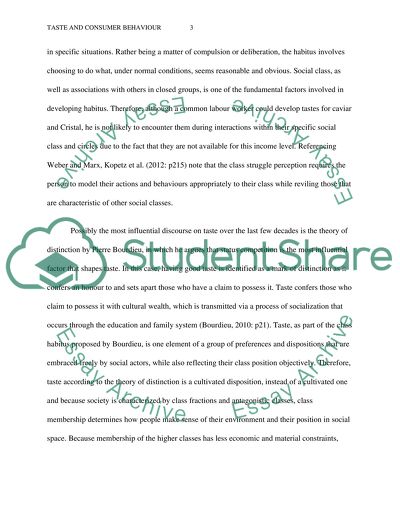Cite this document
(“With reference to Bourdieus theory of distinction and other relevant Essay - 2”, n.d.)
With reference to Bourdieus theory of distinction and other relevant Essay - 2. Retrieved from https://studentshare.org/family-consumer-science/1682172-with-reference-to-bourdieus-theory-of-distinction-and-other-relevant-theorists-on-social-class-give-a-detailed-example-of-how-a-specific-habitus-shapes-consumer-behaviour
With reference to Bourdieus theory of distinction and other relevant Essay - 2. Retrieved from https://studentshare.org/family-consumer-science/1682172-with-reference-to-bourdieus-theory-of-distinction-and-other-relevant-theorists-on-social-class-give-a-detailed-example-of-how-a-specific-habitus-shapes-consumer-behaviour
(With Reference to Bourdieus Theory of Distinction and Other Relevant Essay - 2)
With Reference to Bourdieus Theory of Distinction and Other Relevant Essay - 2. https://studentshare.org/family-consumer-science/1682172-with-reference-to-bourdieus-theory-of-distinction-and-other-relevant-theorists-on-social-class-give-a-detailed-example-of-how-a-specific-habitus-shapes-consumer-behaviour.
With Reference to Bourdieus Theory of Distinction and Other Relevant Essay - 2. https://studentshare.org/family-consumer-science/1682172-with-reference-to-bourdieus-theory-of-distinction-and-other-relevant-theorists-on-social-class-give-a-detailed-example-of-how-a-specific-habitus-shapes-consumer-behaviour.
“With Reference to Bourdieus Theory of Distinction and Other Relevant Essay - 2”, n.d. https://studentshare.org/family-consumer-science/1682172-with-reference-to-bourdieus-theory-of-distinction-and-other-relevant-theorists-on-social-class-give-a-detailed-example-of-how-a-specific-habitus-shapes-consumer-behaviour.


